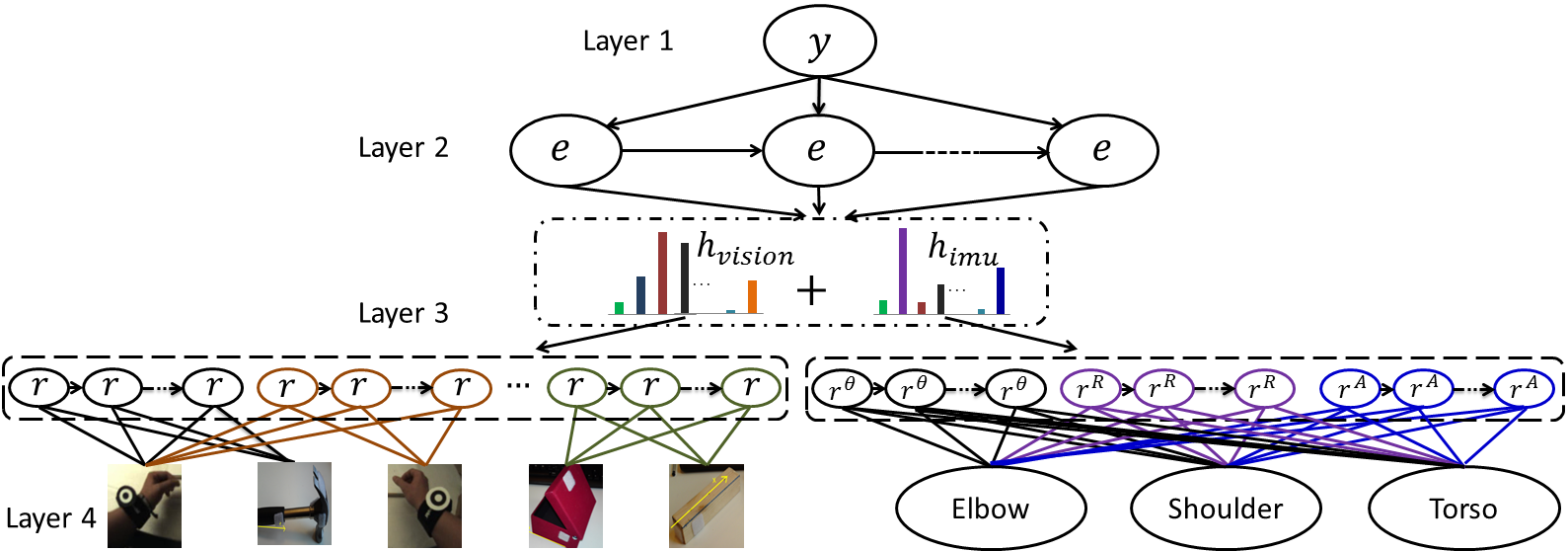COGNITO: Activity Monitoring and Recovery
Ardhendu Behera, David Hogg and Anthony Cohn
The goal of this work is to recognize egocentric atomic events in real-time. The atomic events are characterised in terms of binary relationships (bag-of-relations) between parts of the body and manipulated objects. The key contribution is to summarise, within a histogram, the relationships that hold over fixed time interval. This histogram is then classfied into one of a number of atomic events. The relationships encode both the types of body parts and objects involved (e.g. wrist, hammer) together with a quantised representation of their distance apart and the normalised rate of change in this distance. The quantisation and classifier are both configured in a prior learning phase from training data.

Overview of our hierarchical framework: atomic events e are inferred using spatiotemporal pairwise relations r from observed objects and wrists, and relations between body parts (elbow-shoulder and shoulder-torso) using inertia sensors (IMU). Activities y are represented as a set of temporally-consistent e.
Motivation
Most of the existing approaches for activity recognition are designed to perform after-the-fact classification of activities after fully observing videos of single activity. Moreover, such systems usually expect that the same number of people or objects are observed over the entire activity whilst in realistic scenarios often people and objects enter/leave the scene while activity is going on.
There are three main objectives of the proposed activity recognition system: 1) to recognise the current event from a short observation period (typically two seconds); 2) to anticipate the most probable event that follows on from the current event; 3) to recognise activity deviations.
Publications
A. Behera, D. C. Hogg and A. G. Cohn, Egocentric Activity Monitoring and Recovery (ACCV 2012). pdf
A. Behera, A. G. Cohn, D. C. Hogg. Workflow Activity Monitoring using the Dynamics of Pair-wise Qualitative Spatial Relations. International Conference on MultiMedia Modeling (MMM 2012) (Oral). pdf
S. F. Worgan, A. Behera, A. G. Cohn, D. C. Hogg. Exploiting petri-net structure for activity classification and user instruction within an industrial setting. International Conference on Multimodal Interaction (ICMI 2011). pdf
Demos:
labeling and packaging bottles
hammering nails and driving screws
Database and demos are available to download here .
Acknowledgement
This research work is supported by EU FP7 (ICT Cognitive Systems and Robotics) grant on COGNITO (ICT- 248290) project. We also thank our collaborators at the COGNITO partners.
